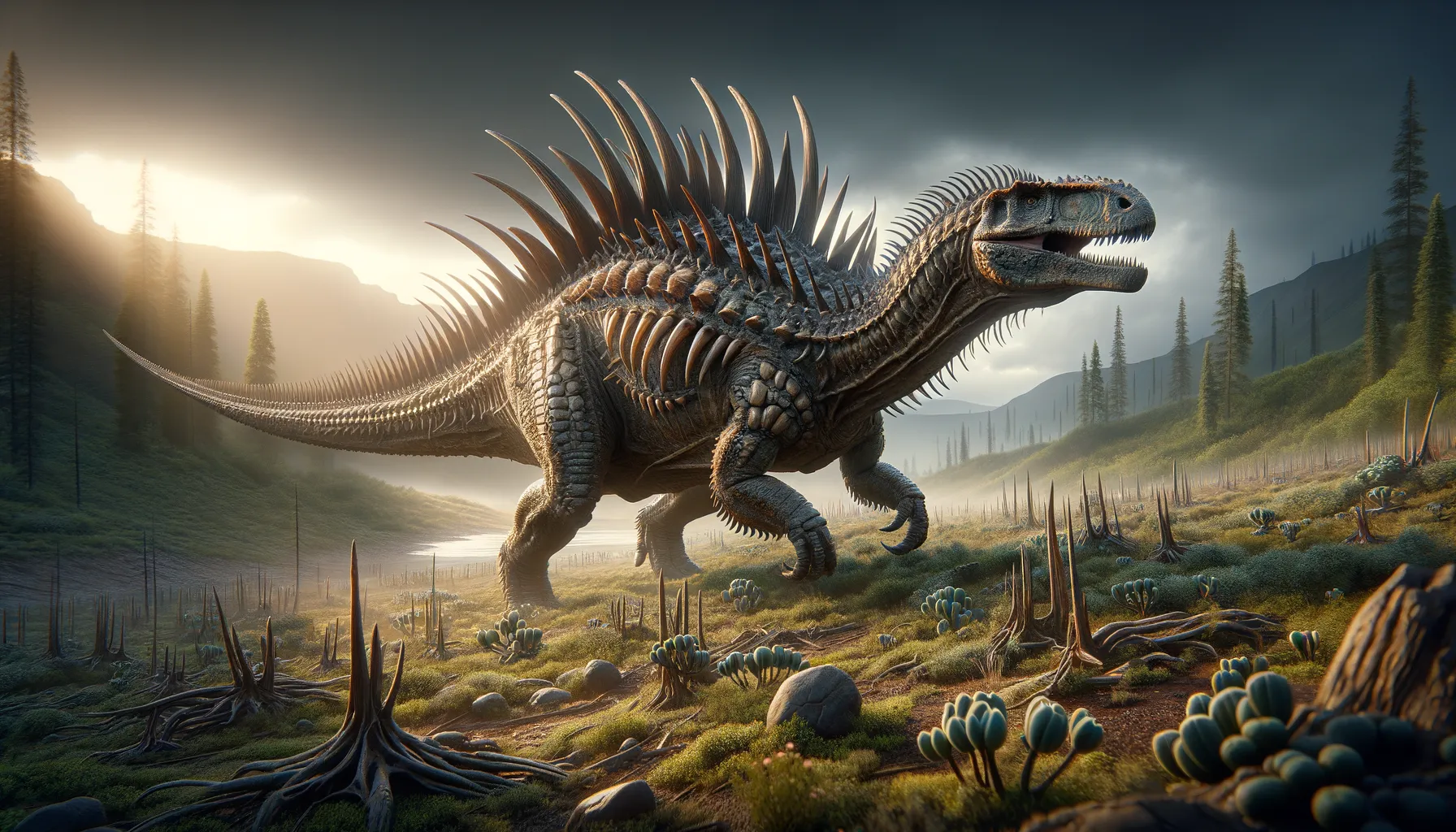
Dongyangopelta
Armored and Mighty in the Cretaceous Era
Period
Cretaceous
Length
Around 15 feet long, like a small bus.
Height
About 4 feet tall, reaching an adult's shoulder.
Weight
Roughly 2 tons, similar to a large car.
Dongyangopelta was an armored dinosaur that lived during the Late Cretaceous period. Its bony exterior provided substantial defense against predators, making it a tough target in its ecosystem. Notably, this dinosaur had a clubbed tail, a feature that offered it additional protection. As a herbivore, it primarily fed on low-lying vegetation and traveled in groups for added safety. Its fossils offer significant insight into the evolutionary history of ankylosaurs.
Diet
Dongyangopelta was herbivorous, mainly consuming low-lying plants and shrubs. Its diet consisted of various ferns, cycads, and other prehistoric vegetation. It had strong, leaf-shaped teeth adapted for grinding plant material.
Hunting
Dongyangopelta did not engage in hunting activities, as it was strictly a plant eater. It relied on its armor for defense rather than engaging in predatory behavior. This dinosaur's lifestyle was more about browsing and foraging for food.
Environmental challenges
Dongyangopelta faced environmental challenges that included competition for food resources. As plant life could be sparse during dry periods, they needed to migrate to areas with abundant vegetation. Predators were another challenge, but their armor helped deter most attacks. Climate changes over time also posed a threat to their survival, impacting their food sources.
Speed
Dongyangopelta moved slowly due to heavy armor.
Lifespan
Likely similar to other ankylosaurs, around 70-80 years.
First discovery
First discovered in Dongyang, Zhejiang, China in 2011.
Fun Facts
- Dongyangopelta was a type of ankylosaur, a group of dinosaurs known for their armored bodies.
- This dinosaur lived during the Late Cretaceous period, around 100 million years ago.
- Fossils of Dongyangopelta were first discovered in the Zhejiang Province of China.
- The name 'Dongyangopelta' means 'shield from Dongyang,' referencing the place where it was found.
- Like other ankylosaurs, Dongyangopelta had a club-like tail that it used for defense.
- Its armor consisted of bony plates embedded in its skin, providing protection from predators.
- Dongyangopelta was a herbivore, meaning it primarily ate plants.
Growth and Development
Young Dongyangopelta likely grew slowly, developing their protective armor as they matured. This gradual growth allowed them to become less vulnerable to predators over time. Their development depended on their access to a stable food supply, ensuring they gained the necessary nutrients.
Habitat
Dongyangopelta inhabited forested floodplains with plenty of vegetation. The environment was lush and provided ample food resources for herbivorous dinosaurs. Additionally, the region had varied terrain, including rivers and lakes, supporting a diverse ecosystem. This type of habitat offered protection and a rich supply of plant material for feeding.
Interaction with other species
Dongyangopelta's primary interactions with other species were defensive. Its heavily armored body dissuaded predators from attacking. It likely coexisted with other herbivorous dinosaurs, possibly moving in groups to fend off hunters. Their presence would have influenced local plant life distribution, impacting other herbivores they cohabited with.
Natural lifespan
Dongyangopelta could naturally live up to 70-80 years.
Reproduction
Dongyangopelta most likely reproduced by laying eggs, typical of many dinosaurs. Nesting sites would have been carefully chosen to protect eggs from predators. The hatchlings would have been relatively small and relied on rapid growth and group protection. These young ankylosaurs would need to quickly develop their armor for survival.
Social behaviour
Dongyangopelta likely moved in small herds or family groups. These social units provided added protection against predators. Their communication might have included varying vocalizations and behaviors to signal danger. Herding behavior not only improved safety but also facilitated teaching the young how to forage effectively.
Fossil locations
Fossils of Dongyangopelta were discovered exclusively in China. Specifically, these remains were found in the Zhejiang Province. The findings have provided crucial information about the distribution of ankylosaurs in Asia. This location has helped paleontologists understand the prehistoric ecosystems of the region.
